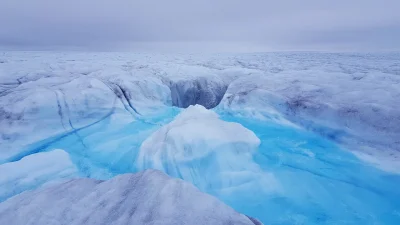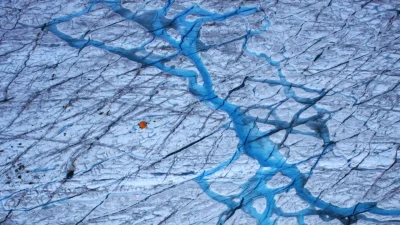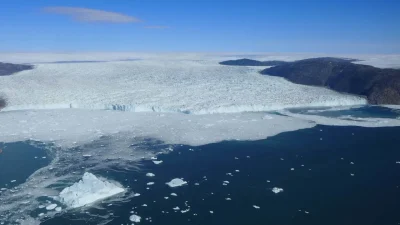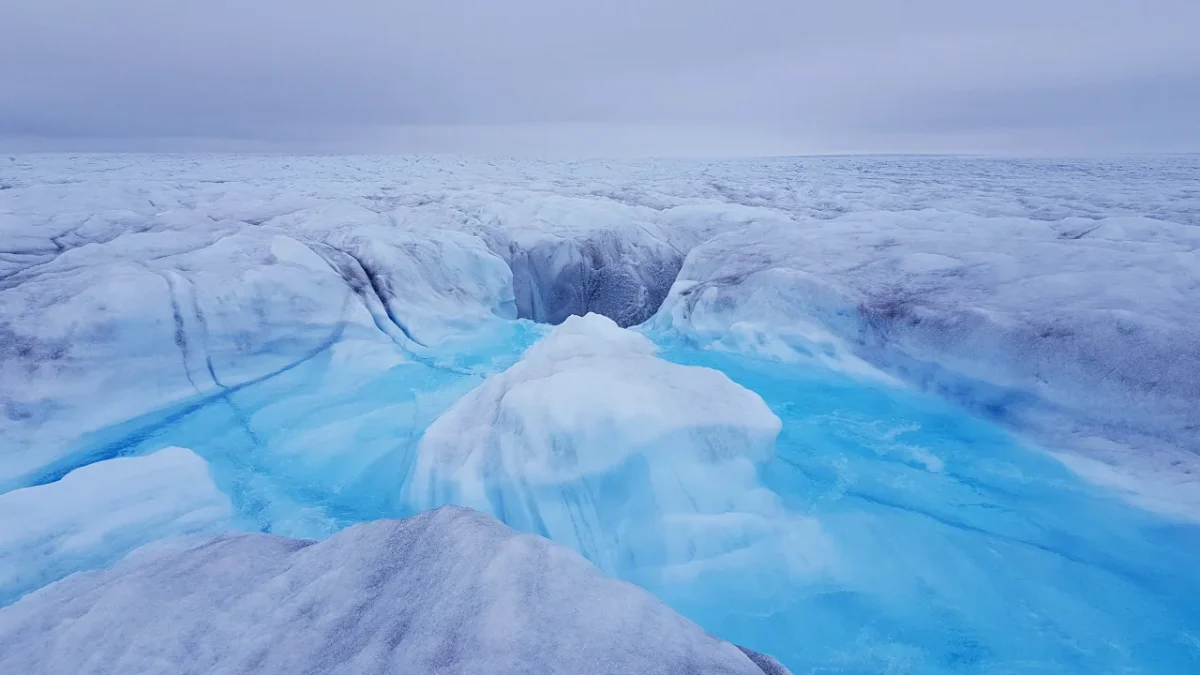GREENLAND’S ICE IS MELTING FAST FROM THE BOTTOM UP

The Greenland ice sheet is melting from the bottom up, scientists say, which could have a significant impact on global sea level rise.
The ice sheet covering Greenland is melting rapidly at its base and is injecting far more water and ice into the ocean than previously understood, according to new research, which could have serious ramifications for global sea level rise.
“Unprecedented” rates of melting have been observed at the bottom of the ice sheet, caused by huge quantities of meltwater falling down from the surface, according to the study published in the Proceedings of the National Academy of Sciences.
As the meltwater falls, its gravitational potential energy is converted to kinetic energy, which ultimately warms the water as it pools at the base of the ice sheet. In that process, the study found that the Greenland ice sheet produces more energy than the world’s 10 largest hydroelectric dams combined.
“However, the heat generated by the falling water is not used to generate electricity. Instead, it melts the ice,” Poul Christoffersen, a Cambridge University senior scientist who took part in the study, told CNN.

Meltwater on the surface of the ice sheet falls through cracks to the base.
During warmer months, meltwater pools into lakes and streams on the surface of the ice sheet. Some of that water drains to the bottom of the ice sheet, falling through cracks and large fractures that form in the ice with movement and stress.
That meltwater contributes to more melting at the bottom of the ice sheet, and it also behaves as a lubricant that promotes faster flow and increases the quantity of ice discharged into the ocean.
Christoffersen explained that when researching the melting of ice sheet and glaciers at their bases, studies tended to focus on external heat sources.
“But what we hadn’t really looked at was the heat generated by the draining meltwater itself,” he said. “There’s a lot of energy stored in the water that forms on the surface, and when it falls, the energy has to go somewhere.”
The Greenland ice sheet is the second largest in the world and is already the biggest single contributor to global sea level rise.
“The ice in Greenland is melting on the surface faster than the snowfall can keep up with, so there is quite a big loss from the melting,” Christoffersen told CNN. “In a substantial part of the ice, we get melt rates which can be up to five or six centimeters a day.”
However, directly measuring conditions at the base – around 1 kilometer below the surface – poses challenges, particularly in Greenland, where glaciers are among the world’s fastest-moving.

“Unprecedented” rates of melting have been observed at the bottom of the ice sheet.
The Cambridge researchers teamed up with scientists at the University of California Santa Cruz and the Geological Survey of Denmark and Greenland for this study. It focused on the Store Glacier, a large outlet from the Greenland ice sheet.
To measure the melt rates, the researchers used a technique developed at the British Antarctic Survey called phase-sensitive radio-echo sounding, a process by which they can measure the thickness of the ice.
It’s a method that had previously been used on floating ice sheets around Antarctica.
“We weren’t sure that the technique would also work on a fast-flowing glacier in Greenland,” said Tun Jan Young, first author of the study, who installed the radar system on Store Glacier.
“Compared to Antarctica, the ice deforms really fast, and there is a lot of meltwater in summer, which complicates the work.”
Source: CNN








